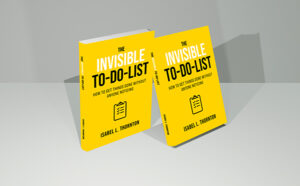
If you’ve ever had a burst of energy, done “all the things,” and then crashed for days or weeks, you’re not alone. Many autistic adults know this as the boom-and-bust cycle. It feels good in the moment to get everything done, but the cost is often autistic burnout.
Pacing is the antidote. It’s the practice of managing energy deliberately to avoid the destructive cycle of overexertion and collapse. In Embracing Self-Care for Autistic Burnout: Your comprehensive resource for managing autistic burnout, pacing is highlighted as a core tool for sustainable living.
What Is the Boom-and-Bust Cycle?
- Boom: A surge of energy (often after rest) leads to overdoing activities, work, or socializing.
- Bust: The body and brain hit a wall, leading to exhaustion, shutdowns, or meltdowns.
- Repeat: After recovery, the cycle begins again—often with even less resilience.
Over time, this cycle deepens burnout and erodes confidence in managing daily life.
How Pacing Works
Pacing means balancing activity with recovery before you reach exhaustion. It’s not about doing less forever—it’s about creating sustainable rhythms.
Practical pacing strategies include:
- Plan Breaks in Advance
Don’t wait until you’re drained. Schedule rest as a non-negotiable part of the day. - Use the “Spoon Theory” or Energy Accounting
Track your available energy (“spoons”) and spend them wisely, leaving reserves. - Set Time Limits on High-Demand Tasks
Use timers or alarms to stop before overwhelm hits—even if you feel like you could do more. - Alternate Demanding and Gentle Activities
Balance work, chores, or socializing with low-energy, sensory-friendly recovery. - Listen to Early Warning Signs
Irritability, brain fog, or sensory sensitivity often mean it’s time to pause.
Why Pacing Is Hard for Autistic Adults
- Masking pressure: Feeling the need to “keep up” with neurotypicals.
- Societal expectations: Productivity is overvalued, and rest is stigmatized.
- Perfectionism: A desire to do everything once the energy is there.
- Fear of judgment: Worrying others will see pacing as laziness.
These challenges are real—but pacing is still possible with practice and self-compassion.
Tools to Support Pacing
- Color-coded planners with built-in rest blocks
- Wearable devices or apps that remind you to pause
- Journaling to track energy highs and lows
- Checklists with “stop points” to prevent overdoing
“The pacing strategies in this book stopped me from crashing over and over. Now I get more done without wiping myself out.” – Amazon review
Sustainable Living Over Survival Mode
Pacing is not about giving up productivity—it’s about creating balance so you can live more consistently and avoid the rollercoaster of burnout. It’s the difference between sprinting to exhaustion and walking steadily forward.
In Embracing Self-Care for Autistic Burnout, you’ll find detailed pacing exercises, personal stories, and tracking tools to help you make it a daily practice.
🟢 Learn how to pace yourself and prevent burnout
Author

Laura Mitchell writes with a focus on supporting autistic adults and those navigating the challenges of autistic burnout. Drawing on personal experiences and countless conversations within the neurodivergent community, she creates resources that are compassionate, practical, and easy to follow.Her work is grounded in a belief that autistic voices deserve to be heard and understood, and that self-care should be accessible and validating for everyone. Through her books, Laura aims to provide encouragement, clarity, and strategies that help readers build lives that feel sustainable and authentic.When she’s not writing, Laura enjoys quiet routines, creative hobbies, and walking in the hills close to her country home.





